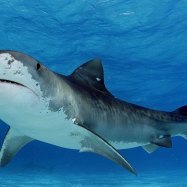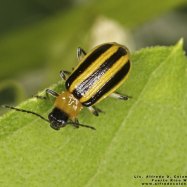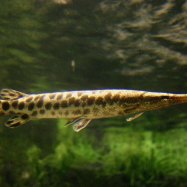
Escolar
1-2 meters
The Escolar, a fish from the Gempylidae family, is a fascinating creature with an elongated and cylindrical body. These fish can grow up to 1-2 meters in length and are commonly found in the open ocean. They are also known as snake mackerel due to their resemblance to a snake. Keep a lookout for this unique animal on your next ocean adventure!
Animal Details Summary:
Common Name: Escolar
Kingdom: Animalia
Habitat: Marine
Escolar: The Mysterious and Misunderstood Marine Creature
Deep in the dark waters of the open ocean lives a mysterious and controversial creature known as the escolar. With its elongated and cylindrical body, dark coloration, and carnivorous habits, this fish might seem like just another ordinary marine animal. However, the Escolar has a lot more to it than meets the eye. In this article, we will dive into the intriguing world of the Escolar and uncover its fascinating characteristics and behaviors Escolar.A Unique Species
The Escolar, with its scientific name Lepidocybium flavobrunneum, belongs to the kingdom Animalia, the phylum Chordata, and the class Actinopterygii. It is the only known species in the genus Lepidocybium and is a member of the Gempyliformes order, which also includes other deep-sea dwellers such as snake mackerels and lancetfish. The Escolar is part of the Gempylidae family, and its nearest relatives are the oilfish and rudderfish.This species of fish can be found in tropical and subtropical waters worldwide, with a wide geographical distribution spanning across the Indian, Pacific, and Atlantic Oceans. It is commonly found in open ocean habitats, frequently roaming the deep waters of the Atlantic between 35°N and 35°S latitude. However, it has also been spotted in areas such as the Mediterranean Sea and the Gulf of Mexico, making it a truly global species.
A Predator in the Depths
The Escolar has a unique feeding method, as it is a carnivorous fish that preys on smaller fish and squid. This makes it a powerful and skilled predator in the depths of the ocean. Its diet typically consists of small lanternfish, myctophids, cephalopods, and crustaceans Eastern Meadowlark. Due to its position in the food chain, the Escolar is considered a critical species for maintaining the marine ecosystem's balance.Despite its predatory behavior, the Escolar is known for being a slow-moving fish, often relying on stealth and surprise to catch its prey. Its dark brown to black coloration helps it blend into the deep ocean's dark waters, making it difficult to spot by its potential victims.
The Controversy Surrounding the Escolar
The Escolar has gained immense popularity, but for all the wrong reasons. Despite its unique characteristics and impressive abilities, this misunderstood fish has also become the center of a heated debate in recent years. The controversy surrounding this creature revolves around its consumption, as it has been reported to cause gastrointestinal problems for some people.According to experts, the Escolar's diet of wax esters found in its prey's bodies accumulates in the fish's flesh, making it difficult for the human digestive system to digest. This leads to unpleasant gastrointestinal symptoms such as diarrhea and vomiting, leading some countries to ban its sale and consumption.
The Truth Behind the Myth
Many people often refer to Escolar as "the laxative fish," spreading the misconception that it is a dangerous and inedible species. However, the truth is that not all individuals experience such digestive issues when consuming escolar. A study published in the Journal of Food Science found that only a small portion of the population, around 2% to 5%, experiences these symptoms.Additionally, the misconception has also led to the mislabeling of this fish as "white tuna" or "butterfish," leading to consumer confusion. These false names have contributed to a decline in escolar's reputation, despite its nutritional value and taste. The flesh of the Escolar is actually high in healthy fatty acids, specifically omega-3 fatty acids, making it beneficial for heart health.
A Catch to Treasure
Due to the controversy surrounding the Escolar, this fish is not commonly available in the market. However, for those lucky enough to come across it, it is considered a rare and prized catch. Its flesh is known for its delicate texture and a rich, buttery flavor that melts in your mouth.In Japan, where escolar is more widely consumed, it is a highly sought after delicacy and is even referred to as the "oil fish." Its fatty flesh is often used in sushi and sashimi dishes, as well as grilled or seared to bring out its unique flavor. The Escolar's flesh has been described as being similar to that of tuna, with a creamier texture and a slightly sweeter taste.
An Elusive Creature
The Escolar is a challenging fish to study due to its deep-sea habitat and elusive nature. Researchers have limited knowledge about its reproductive habits and population status due to the species' deep-sea lifestyle, making it difficult to observe in its natural habitat. However, studies have shown that Escolar can reach lengths of up to 2 meters, making it a fairly large species.It is believed that the Escolar reproduces through external fertilization, where the female lays the eggs, and the male fertilizes them in the water. However, there is still little information regarding their spawning grounds and patterns. Due to the lack of data, the Escolar's conservation status is currently unknown, with more research needed to determine its population and threats.
A Fascinating Species to Protect
The Escolar may have gained a bad reputation due to the misinformation surrounding its consumption, but it is undoubtedly a fascinating and unique species worth protecting. The controversy around its consumption has shed light on the importance of proper species identification and labeling to avoid any potential health risks for consumers.Furthermore, with the increasing demand for seafood globally, it is crucial to study and monitor the Escolar's population and reproductive patterns to ensure its sustainability. With its impressive abilities as a deep-sea predator, the Escolar plays a crucial role in maintaining the balance of the marine ecosystem, making its protection and conservation efforts even more critical.
Conclusion
The Escolar, with its mysterious and often misunderstood reputation, is a truly intriguing and unique species. From its dark coloration to its specialized feeding habits, this fish has captivated the curiosity of many. Despite the controversy surrounding its consumption, the Escolar's nutritional value and delicate flavor make it a prized catch for those lucky enough to come across it.While there is still much to learn about this elusive creature, one thing is for sure – the Escolar plays a crucial role in the marine ecosystem and is a species worth protecting. With proper education and research, we can better understand and appreciate this fascinating marine animal and ensure its presence for future generations to come.

Escolar
Animal Details Escolar - Scientific Name: Lepidocybium flavobrunneum
- Category: Animals E
- Scientific Name: Lepidocybium flavobrunneum
- Common Name: Escolar
- Kingdom: Animalia
- Phylum: Chordata
- Class: Actinopterygii
- Order: Gempyliformes
- Family: Gempylidae
- Habitat: Marine
- Feeding Method: Carnivorous
- Geographical Distribution: Tropical and subtropical waters worldwide
- Country of Origin: Worldwide
- Location: Open ocean
- Animal Coloration: Dark brown to black
- Body Shape: Elongated and cylindrical
- Length: 1-2 meters

Escolar
- Adult Size: 1-2 meters
- Average Lifespan: Unknown
- Reproduction: Sexual
- Reproductive Behavior: Depends on the species
- Sound or Call: Unknown
- Migration Pattern: Unknown
- Social Groups: Solitary or in small groups
- Behavior: Slow swimmers, ambush predators
- Threats: Overfishing, accidental catch
- Conservation Status: Not assessed
- Impact on Ecosystem: Unknown
- Human Use: Fishing, culinary purposes
- Distinctive Features: Produces oily, wax ester-rich flesh
- Interesting Facts: Escolar is also known as the 'snake mackerel' and is highly regarded for its rich and flavorful flesh. However, consumption of large amounts of escolar can cause gastrointestinal issues in some individuals.
- Predator: Unknown

Lepidocybium flavobrunneum
The Mysterious and Controversial Escolar: A Fish Like No Other
Amidst the vastness of the ocean, there resides a creature that is shrouded in mystery and surrounded by controversy – the escolar. This elusive fish has captured the curiosity of scientists, chefs, and fish enthusiasts alike with its unique characteristics and interesting facts.Escolar, also known as 'snake mackerel', is a deep-sea fish that inhabits the tropical and subtropical waters around the world. It can be found in the Atlantic, Indian, and Pacific oceans, usually in depths of 200-1000 meters PeaceOfAnimals.Com. But despite its widespread distribution, not much is known about this enigmatic fish.
So, what makes escolar stand out among the sea of marine life? Let's dive deep into the world of escolar and uncover its fascinating features and secrets.
A Not-So-Standard Size and Lifespan
One of the most distinctive features of escolar is its size. Adult escolar can range from 1-2 meters in length and weigh up to 45 kilograms. This makes it one of the largest species in its family, Gempylidae. However, there have been reported sightings of escolar growing up to 2.5 meters in length, making it a formidable presence in the deep-sea ecosystem.But despite its large size, not much is known about the lifespan of escolar. Unlike other fish species that have a definitive lifespan, the longevity of escolar is still a mystery waiting to be unraveled English Shepherd. Some experts suggest that escolar can live up to 20 years, but without proper research and observation, this is just mere speculation.
Reproduction and Reproductive Behavior
The reproductive behavior of escolar is another aspect that remains a mystery. Like most deep-sea fish, escolar has sexual reproduction, where females release eggs into the water and males fertilize them externally. However, the exact reproductive process of escolar is still unknown.Additionally, the reproductive behavior of escolar varies depending on the species. Some species are known to exhibit group spawning, while others are solitary spawners. Yet, further research is needed to understand the breeding habits of escolar fully.
The Elusive Sound of Escolar
In the incredible world of marine life, communication through sound is a vital aspect, especially for deep-sea fish. But when it comes to escolar, not much is known about the sounds it produces or if it produces any at all.Researchers have studied the vocalization patterns of other deep-sea fish, such as cod and haddock, but no studies have been conducted on escolar due to its elusive nature. Hence, the sound or call of this mystical fish still remains a mystery.
The Unknown Migration Pattern of Escolar
Migration is a common phenomenon among fish, where they travel to different locations in search of food, mating partners, or for better living conditions. However, the migration pattern of escolar is still unknown.Some experts suggest that escolar migrates to warmer waters during the winter months, but this theory has not been confirmed through research. Hence, understanding the migration patterns of escolar remains a major challenge for scientists.
Social Groups and Behavior of Escolar
Escolar is primarily a solitary fish, but it can also be found in small groups. This behavior is mainly due to its slow-swimming nature and its ambush predator hunting style. Escolar prefers to float in deep waters and attack its prey swiftly when they come within range.Furthermore, escolar is known for its remarkable speed and agility when hunting. It can reach a speed of up to 60 kilometers per hour, making it a formidable predator in the ocean.
A Fish with a Controversial Reputation: Threats and Conservation Status
Despite its elusive nature, escolar has gained quite a reputation, particularly in the world of commercial fishing. This fish has sparked controversies and debates surrounding its consumption, mainly due to its distinct oily and wax ester-rich flesh.Escolar's unique texture and flavor make it a popular choice for the culinary industry, especially in Japan and Hawaii, where it is considered a delicacy. However, the consumption of large quantities of escolar can lead to gastrointestinal issues in some individuals, earning it the nickname 'ex-lax fish.' This has caused many countries, including the United States and Canada, to ban the sale of escolar.
But the biggest threat to escolar's population is overfishing and accidental catch. Due to its slow reproductive rate and low population growth, overfishing can cause a significant decline in escolar's numbers. Sadly, this fish has not been assessed for its conservation status, leaving its fate uncertain.
The Impact of Escolar on the Ecosystem
The role of escolar in the ecosystem is not adequately understood. It is believed that escolar helps regulate the population of its prey, which mainly consists of small fish, squid, and crustaceans. But the exact impact of escolar on the ecosystem is still unknown.Some researchers also suggest that escolar's wax ester-rich flesh may contribute to ocean pollution, as it is known to accumulate toxins, such as mercury. However, further studies are needed to validate this theory and understand the ecological implications of escolar's consumption and waste.
Human Use and Distinctive Features of Escolar
Besides being a popular choice for culinary purposes, escolar's unique characteristics have made it a sought-after fish for other uses. Its large size and rich oily flesh have led many to experiment with its use in the cosmetic and pharmaceutical industries. The wax esters present in escolar's flesh can be used to make various products, including moisturizers, candles, and even motor oil.But perhaps the most distinctive feature of escolar is its ability to produce wax ester-rich flesh. This is a rare characteristic among fish and is why escolar is often referred to as 'butterfish' or 'butter tuna.'
The Enigma of Escolar: An Interesting Conclusion
The escolar, with its elusive nature and unique features, has left scientists and individuals fascinated and intrigued. Its mysterious reproductive behavior, unknown migration pattern, and controversial reputation have made it a fish like no other.Through this article, we have uncovered some interesting facts about escolar and highlighted the gaps in our knowledge about this enigmatic creature. It is clear that more research is needed to understand the escolar fully and make informed decisions regarding its conservation and use. And perhaps, one day, we will finally unravel the mysteries of this magnificent fish and appreciate its role in the fascinating world of marine life.

Escolar: The Mysterious and Misunderstood Marine Creature
Disclaimer: The content provided is for informational purposes only. We cannot guarantee the accuracy of the information on this page 100%. All information provided here may change without prior notice.












